Title: “Kamakhya – The Womb of Shakti”
A Tantric Painting by Rounak Rai with Embedded Kamakhya Mantra Calligraphy
—
In this audacious and spiritually electrifying composition, Rounak Rai presents a Tantric visual invocation of Goddess Kamakhya — the primordial Shakti worshipped in her most raw and formless power. More than a painting, this work is a mantra-infused yantra, combining figurative Tantra art with sacred scriptural calligraphy, designed to invoke, embody, and transform.
—
🔴 Kamakhya: The Tantric Deity of Desire and Liberation
Kamakhya, one of the ten Mahavidyas and the presiding deity of the famous Kamakhya Temple in Assam, is not depicted here in any conventional iconographic form. Instead, Rai reimagines her as a multi-faced, multi-limbed, self-generating force — female, fierce, sensual, and sacred. She is surrounded by attendants, heads, limbs, and tongues, all entangled in a cosmic dance of creation and dissolution.
This form is reminiscent of Chhinnamasta, yet more archetypal — blending Kali, Shakti, Bhairavi, and Kamakhya into one pan-Tantric form. Her central torso sprouts three blood-streams, her body dotted with eyes and mouths, symbolizing total awareness and cosmic hunger.
—
🟠 Calligraphy: Kamakhya Mantra as Visual Energy Field
The background is soaked in golden ochre and vibrates with repetitive red and saffron mantras, hand-painted in devanagari script:
> ॐ ऐं ह्रीं क्लीं कामाख्यायै नमः
श्री श्री श्री कामाख्या प्रसन्न भव
ह्रीं श्रीं क्लीं…
These are not mere decoration — they are sonic patterns made visible. In Tantric practice, the mantra is the goddess. By inscribing it in layers, Rai creates a sacred auditory atmosphere around the central form — almost as if the painting chants.
Each brushstroke of calligraphy radiates vibration, and together they form a ritual field — like the bhitti-chitra (wall-paintings) found in eastern Indian temples and tantric caves.
—
🟢 Symbolism of the Forms
Headless Forms & Flying Blood: The act of self-decapitation is symbolic of transcending the mind and offering ego to Shakti herself.
Tongue Extended into Others’ Mouths: Represents life-force transmission (prana shakti) — not death, but activation.
Multiple Eyes, Breasts, and Vaginal Forms Hidden in Symbolism: These elements nod toward the yoni as the source of creation, which is at the core of Kamakhya worship.
Dancers and Fallen Demons: Shown in sensual or chaotic posture, symbolize the tamed and untamed energies of desire (kama) — both destructive and liberating.
—
🟣 Tantric Philosophy in the Painting
This painting does not aim to comfort — it seeks to reveal. Kamakhya is the goddess of menstruation, sexuality, fertility, and spiritual liberation. She is worshipped not through denial of the body, but through its reverence as sacred.
By fusing calligraphy with raw figurative distortion, Rounak Rai reflects the non-dual Tantric worldview:
The body is the temple.
Blood is not impure — it is Shakti’s flow.
Death is not the end — it is ego’s transformation.
Desire (kama) is not bondage — it is a path to moksha when awakened consciously.
—
🎨 Rounak Rai’s Signature Elements
Flat planes, tribal dotting, bold contrasts.
Mantra as background texture, functioning as both sound and space.
Use of non-naturalistic colors (blues, pinks, reds) to express energetic states, not realism.
A complex balance between ritual, philosophy, and rebellion — all anchored in Indian aesthetic history.
—
📝 Conclusion: The Painting as Ritual
This is not just a painting. It is a tantric altar. A place for visual sadhana. Rounak Rai reclaims ancient visual philosophy, not to decorate, but to initiate the viewer into Kamakhya’s wild grace — where the mantra becomes form, the body becomes divine, and Shakti becomes visible.

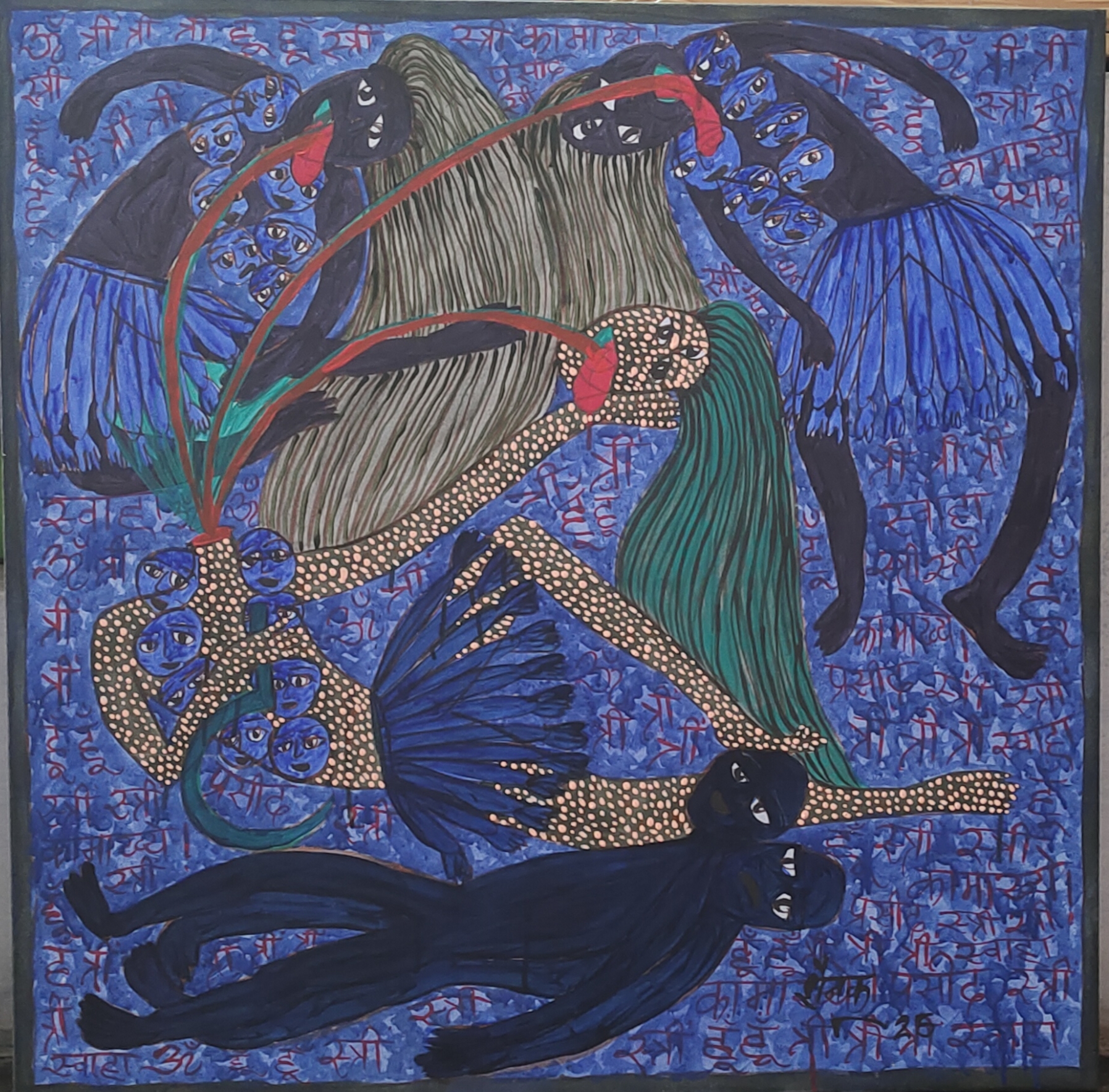
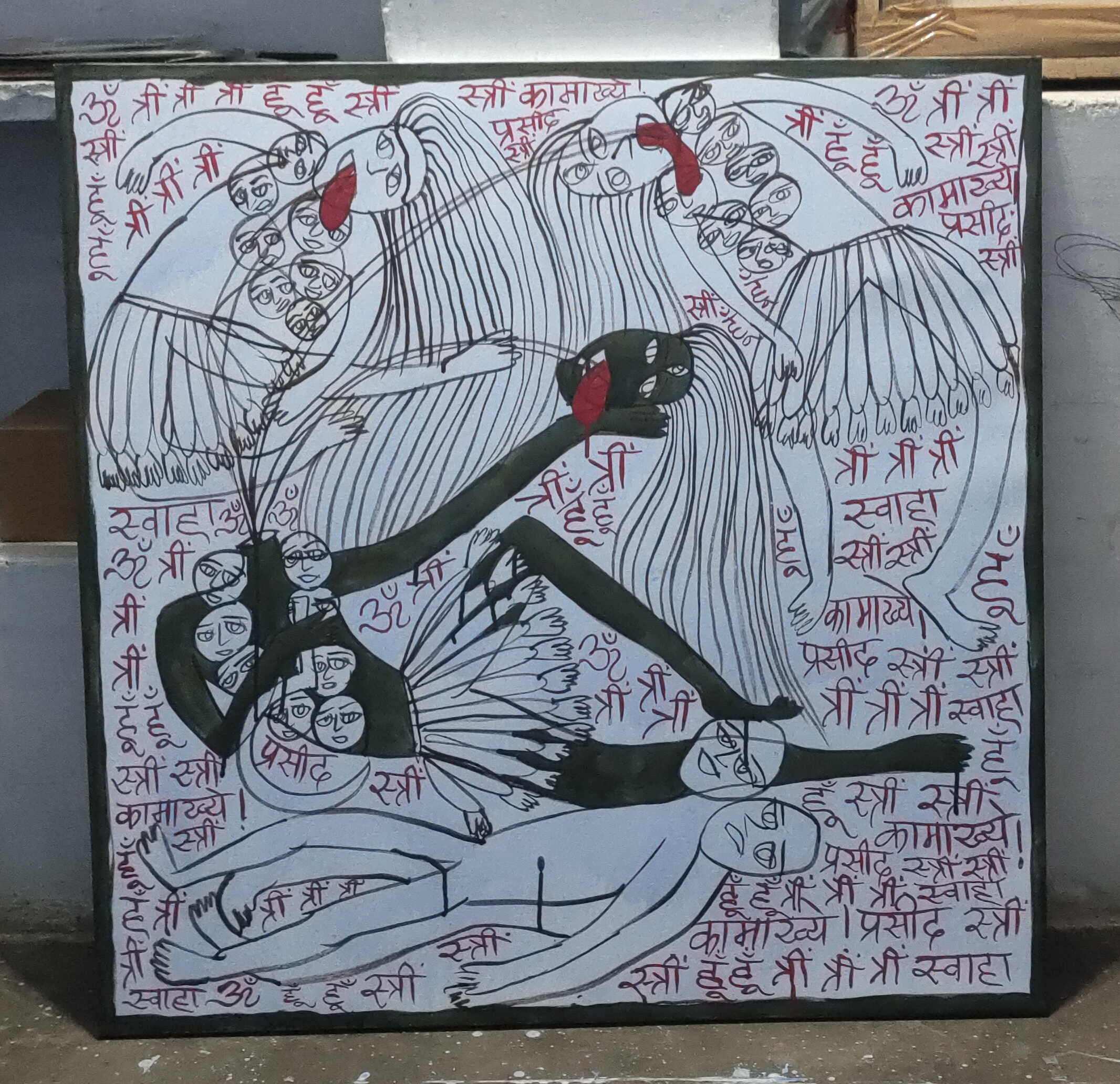
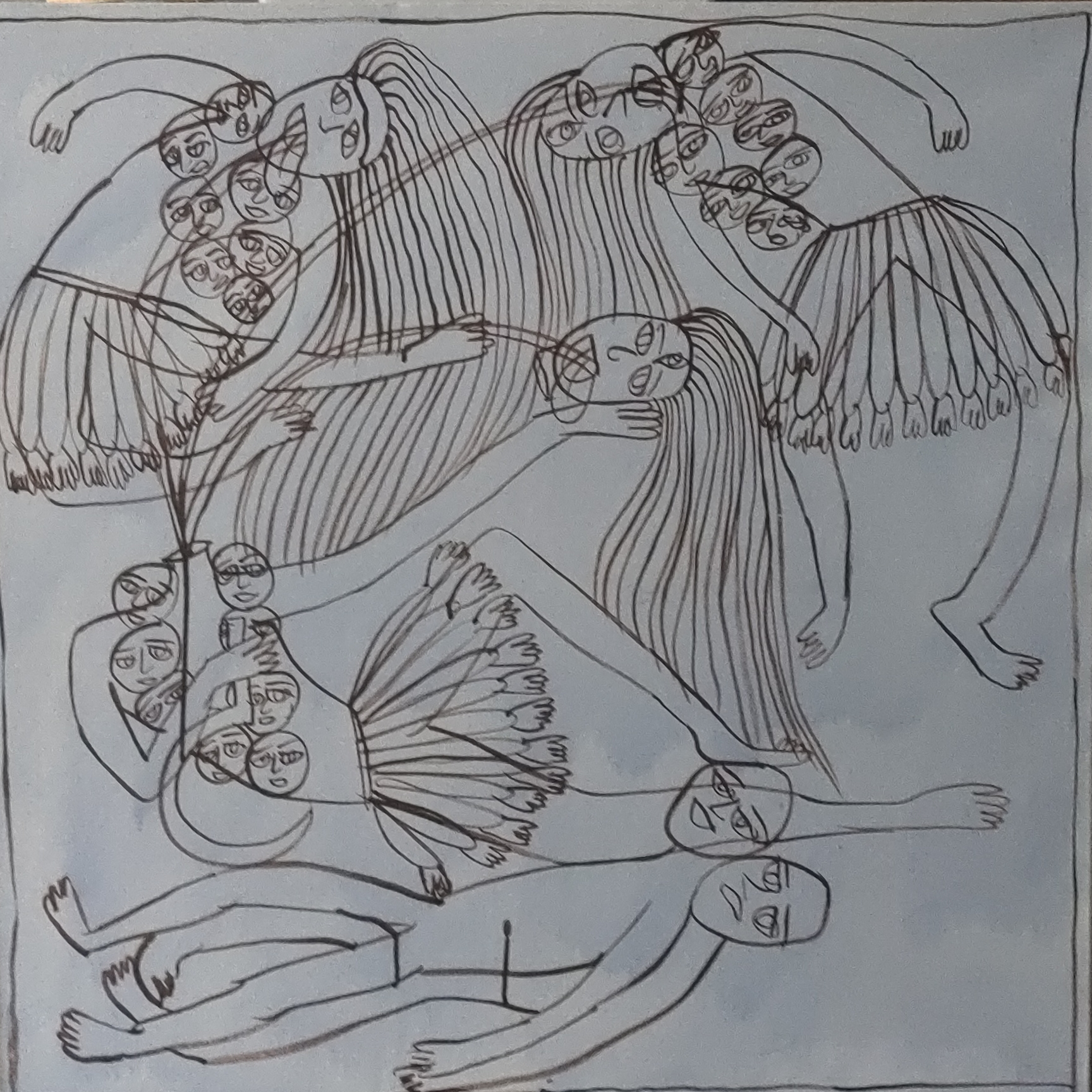
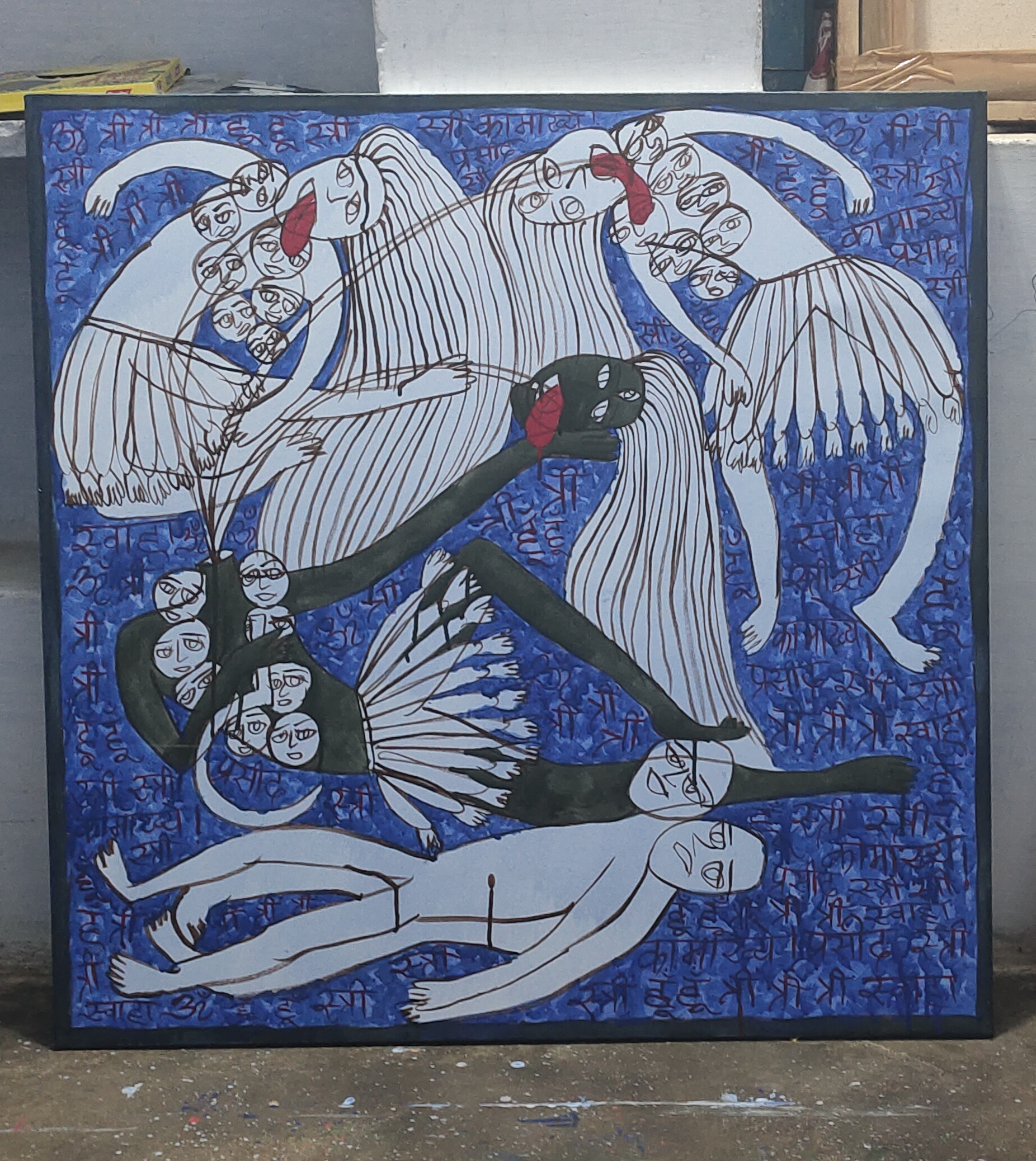
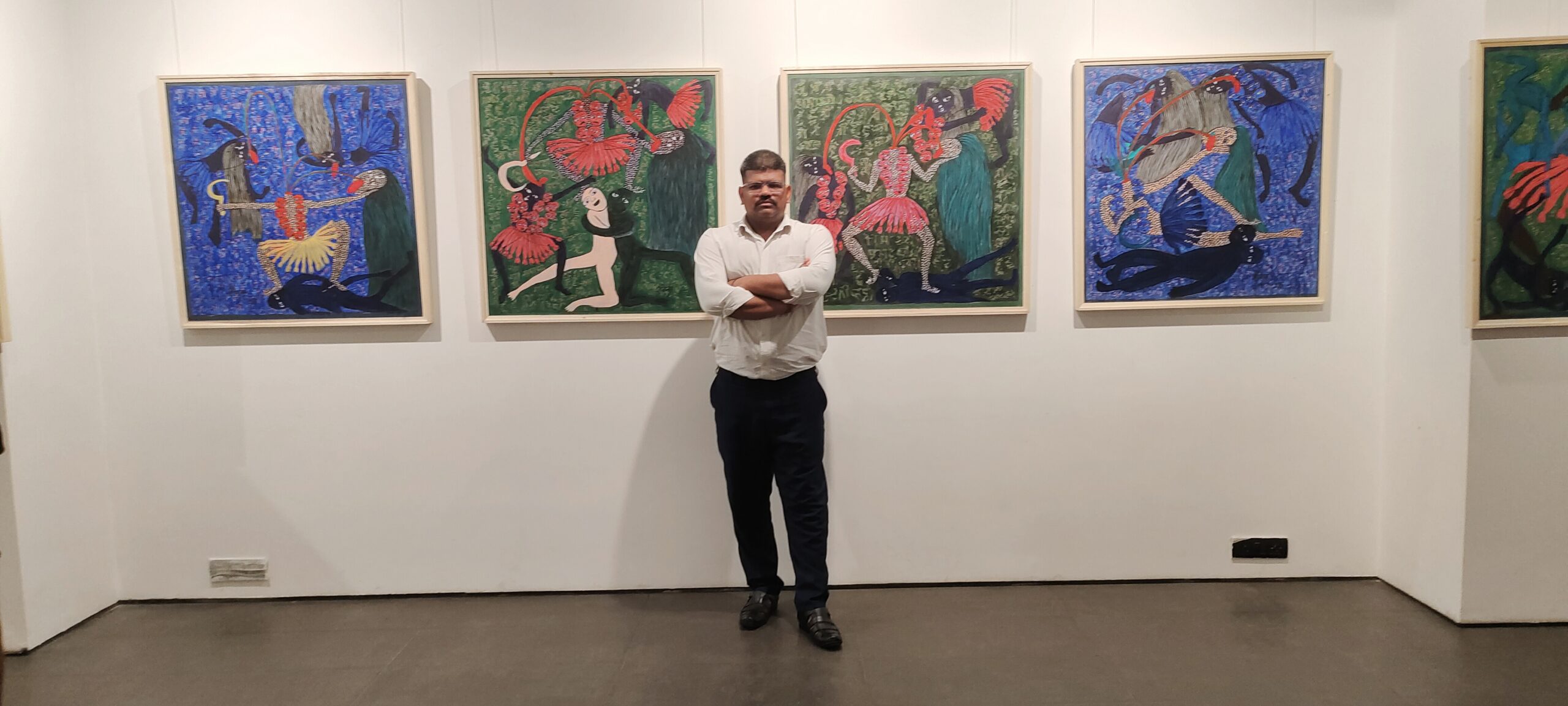
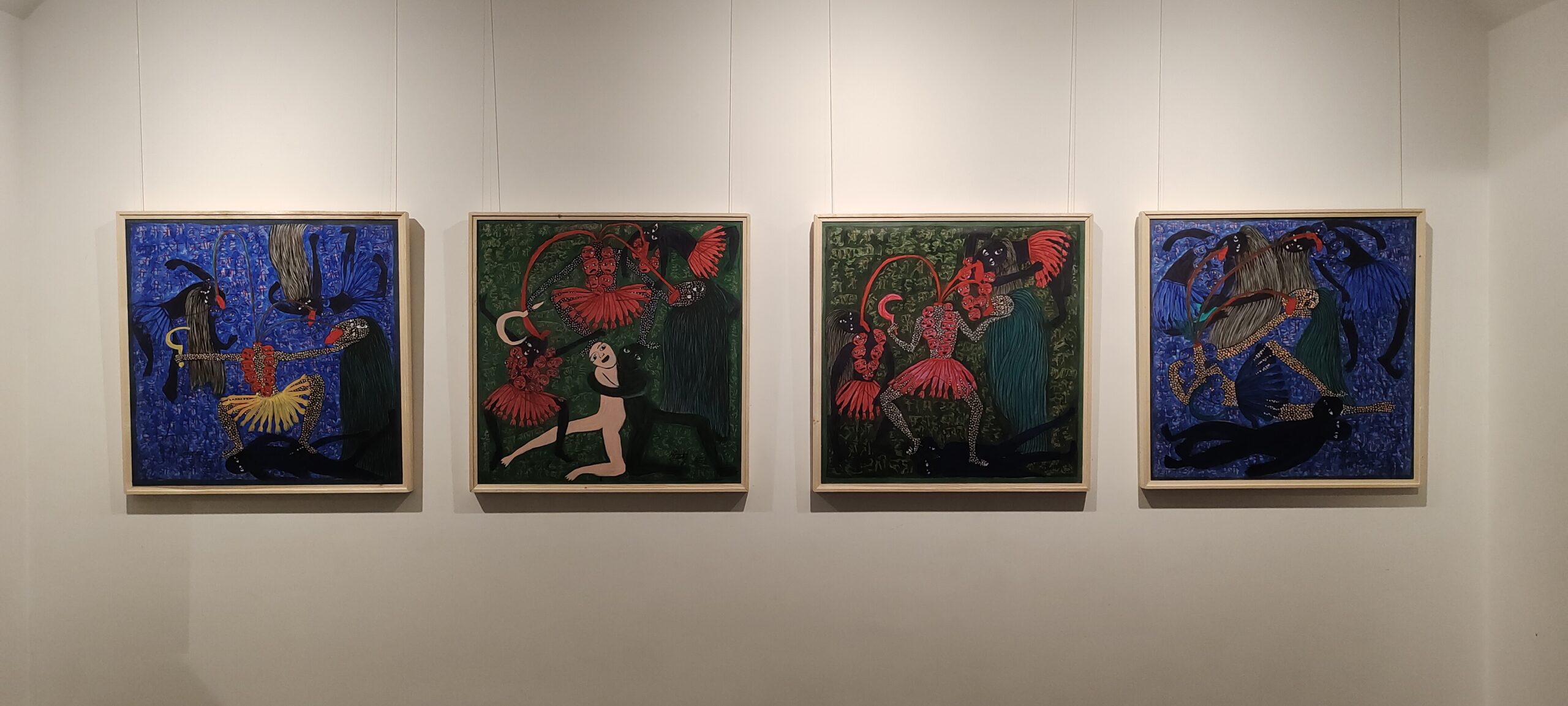
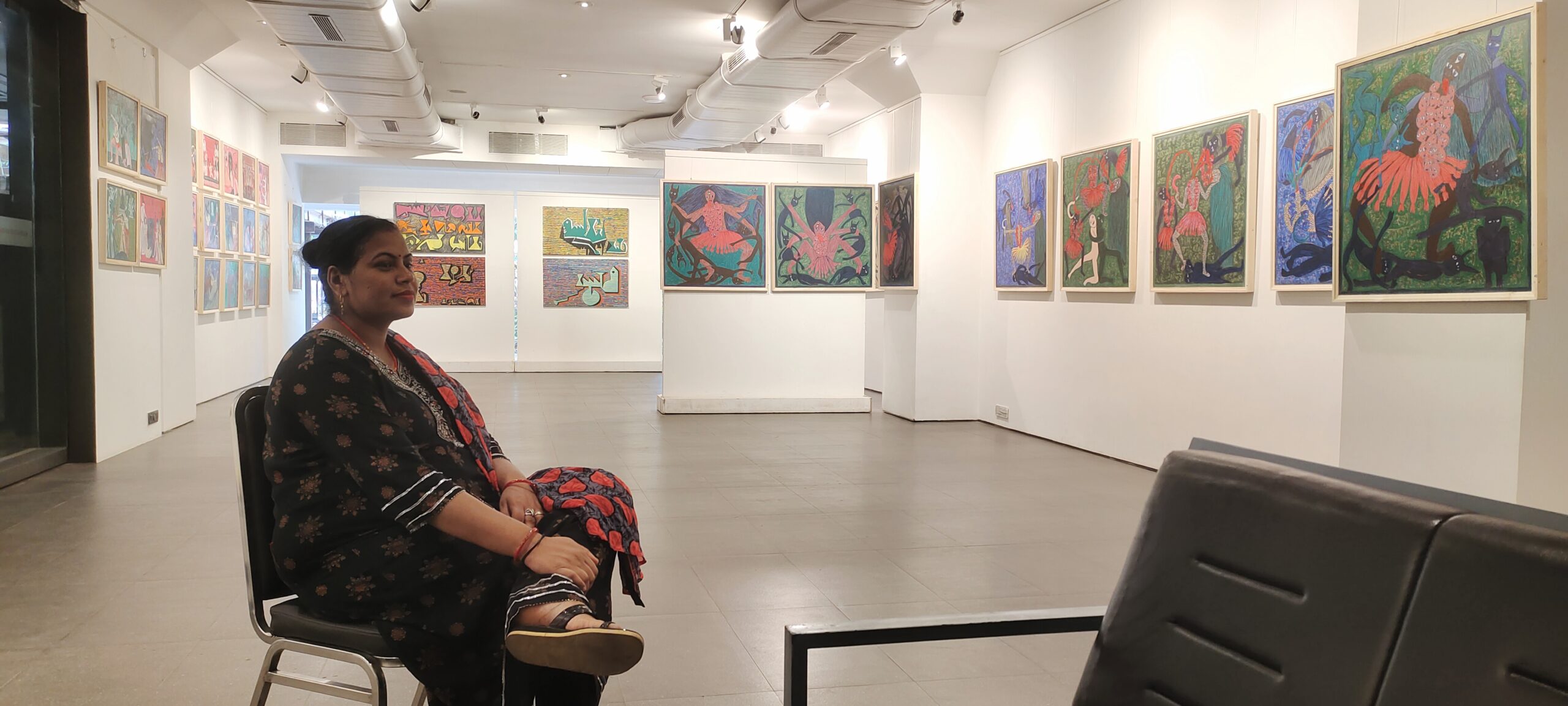
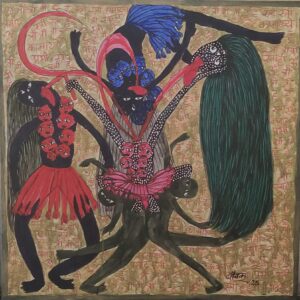
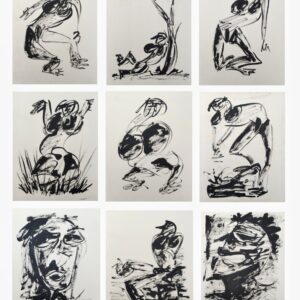
Reviews
There are no reviews yet.